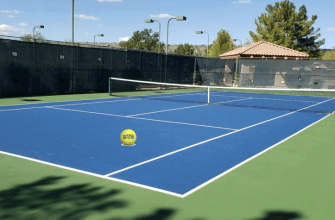To gain a comprehensive understanding of tennis tiebreakers, delve into the overview of tiebreakers. Define the purpose of tiebreakers in tennis and explore their importance in matches.
Definition and Purpose of Tiebreakers in Tennis
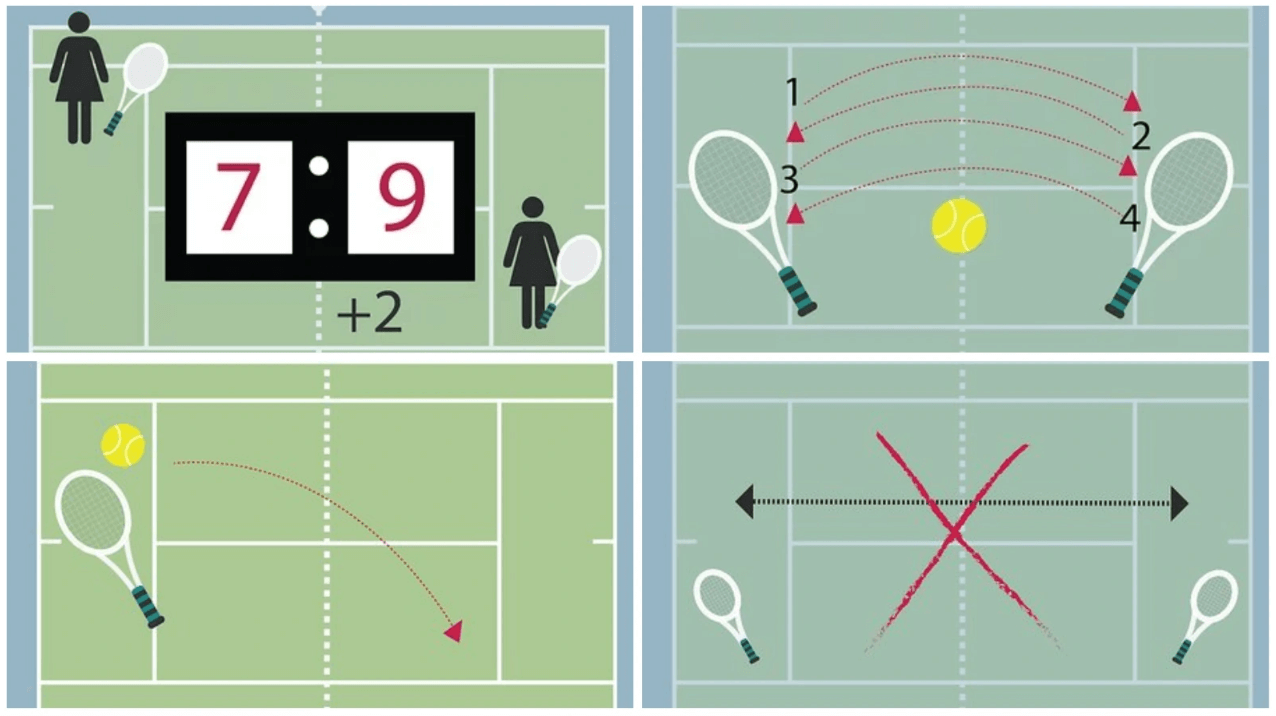
Tiebreakers in tennis are essential to decide a victor when a set finishes in a tie. They are intended to provide an exciting and fair way of breaking the deadlock.
During a tiebreaker, players compete to reach a certain number of points, usually seven or ten, with a margin of two points at least. This is to make the game faster and avoid sets from going on forever.
One peculiar aspect of tiebreakers is that they have their own scoring system, wherein points are called using numbers instead of the traditional love-fifteen-thirty nomenclature. This adds a factor of curiosity and variation to the match while escalating the competition between players.
Tennis fans may find it interesting to know that the concept of tiebreakers was first introduced by James Van Alen in 1965. The reason? Nobody wants to watch a never-ending game!
Why tiebreakers are important in tennis matches
Tiebreakers are key in tennis matches, bringing fairness and decisive outcomes.
Here’s why they’re so important:
- Equal Chance: Both players get an identical shot at winning the set, no matter their performance up to that point.
- Shorter Matches: Tiebreakers help reduce match duration, avoiding fatigue and allowing more games to be played within a limited timeframe.
- Thrilling Moments: They add suspense and excitement, keeping viewers on the edge of their seats.
- Unbiased Outcomes: They put an end to endless sets, providing clear rules to determine a victor.
- Opportunity to Comeback: Players who’ve lost ground can make a comeback with tiebreakers.
Tiebreakers have evolved since they were first introduced in 1970. Rules have been adjusted to give players a fair chance while entertaining spectators. This highlights just how essential tiebreakers are to modern tennis.
The origin of tiebreakers also shows their value. The first use of one was in 1971 at Wimbledon, during John Newcombe and Roger Taylor’s match. This revolutionary event showed how tiebreakers could improve gameplay and streamline tournaments.
Love means nothing, unless it’s the score you keep getting – that’s what traditional tennis scoring system is all about!
Traditional Tennis Scoring System
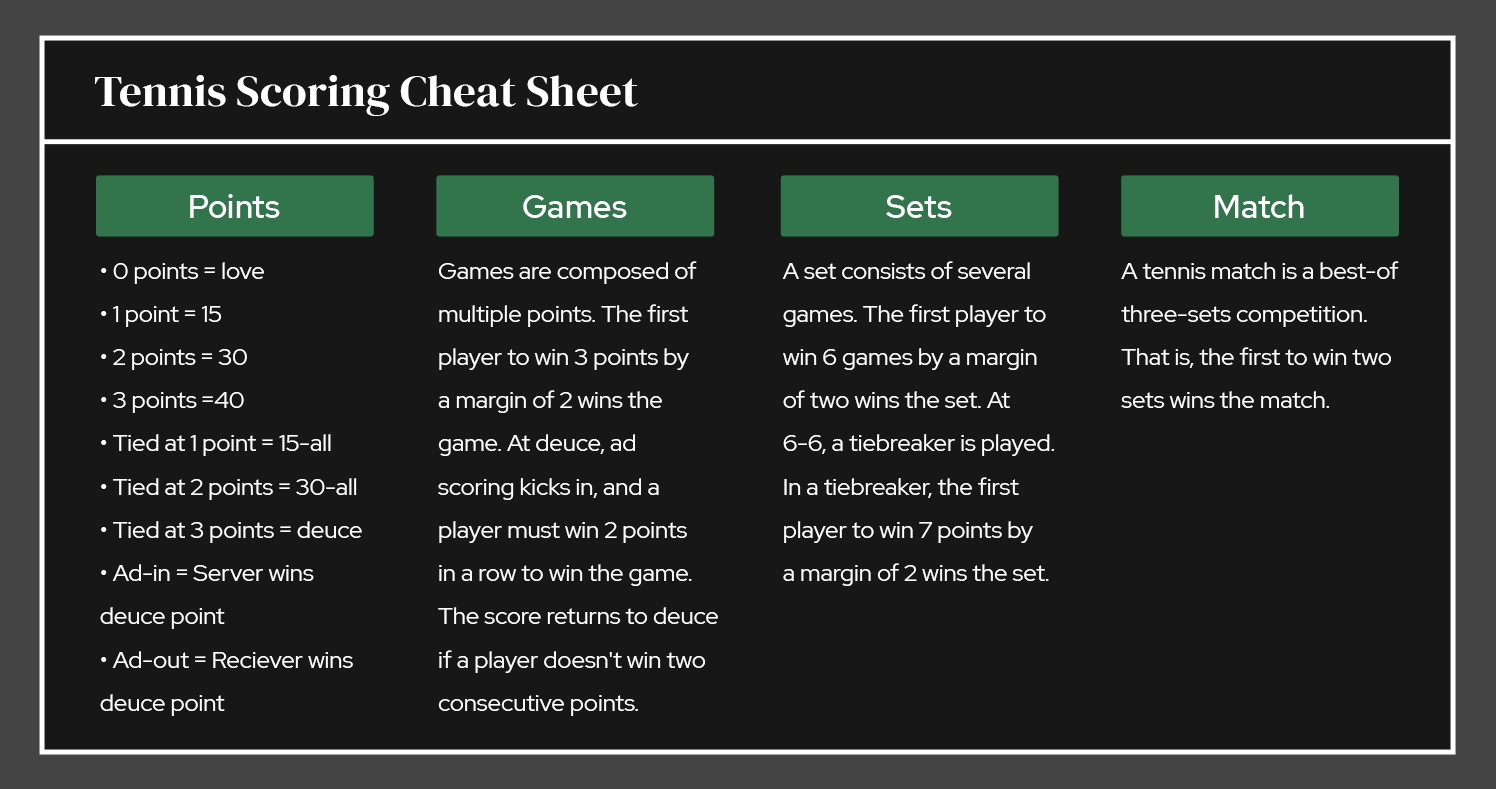
To understand the traditional tennis scoring system with its sub-sections – ‘Explanation of traditional scoring system in tennis’ and ‘How matches are typically played without tiebreakers’ – let’s dive into how it works. This system adds complexity to the game by incorporating various terms and rules, affecting the way matches unfold and determining the winner.
Explanation of traditional scoring system in tennis
“Love” in tennis means a score of zero. This is thought to come from “l’oeuf” in French, meaning egg due to its shape.
In traditional scoring, if a player wins six games and their opponent five, they must win another game to take the match. This is called the “no ad” system and was introduced to make matches shorter.
Tennis is believed to have been around since ancient times. Its scoring system has been a lasting part of its history.
Matches are usually played without tiebreakers: a test of endurance that continues until the players or audience give up.
How matches are typically played without tiebreakers
Tennis games without a tiebreaker use a unique scoring system. It starts with a score of “love” or zero. Points are awarded as: 15, 30, and 40. When the score is 40-40 it’s known as “deuce.” The player who scores the next point has an “advantage.” To win the game, one must secure the advantage and win the following point. If both players reach deuce and none gain an advantage, the game goes back to deuce.
Matches without tiebreakers can be intense. Mental strength is key to success. To win, manage your energy levels. Stay physically fit and mentally sharp. Tiebreakers will decide the winner of a match in sudden death.
Introduction to Tennis Tiebreakers
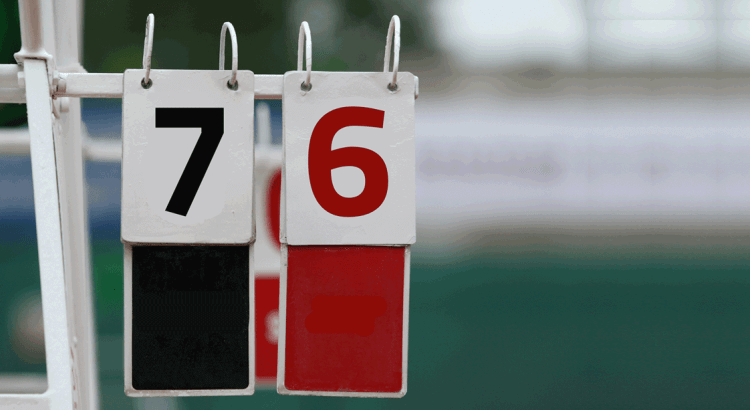
To understand the ins and outs of tennis tiebreakers, delve into the development and implementation of tiebreakers in tennis. Discover why tiebreakers are needed to ensure fair and efficient match completion. Exciting sub-sections await you in this journey of unraveling the intricacies of tennis tiebreakers.
The development and implementation of tiebreakers in tennis
Tennis tiebreakers: the perfect solution for those long matches! They provide a clear-cut winner and thrilling moments for players and spectators alike.
It used to be that a match could go on forever if no one had a decisive lead. But now, tiebreakers have changed this by setting specific rules. To win, players must get a certain number of points or gain a significant lead.
You may not know that tiebreakers were first used at the US Open in 1970. After that, Wimbledon adopted them in 1971, the French Open in 1980, and the Australian Open in 1998.
So, the next time you watch an intense match, remember that tiebreakers help shape the game, adding to its competitive spirit. Break your opponents’ serve, not your spirit!
The need for tiebreakers to ensure fair and efficient match completion
Tiebreakers are crucial in ensuring tennis matches end fairly and promptly. They resolve ties when scores are even, yielding clear winners.
To grasp their importance, let’s review some key points:
- Tiebreakers sidestep long, inconclusive matches that can go on forever.
- They give fans and spectators a definite result in a reasonable amount of time, improving the viewing experience.
- Different scoring for tiebreakers adds a thrilling, unpredictable element to matches.
- These match-deciding moments often showcase a player’s mental and strategic talent as they strive to outdo their opponent under pressure.
- Tiebreakers also guarantee fairness by giving both players equal chances to show what they can do, not just relying on a long game.
- Logistically, tiebreakers let tournaments and organizers stick to schedules and deadlines.
Besides these points, it’s worth noting that tiebreaker rules might differ between formats or tournament regulations, still aiming to deliver fairness and efficiency.
To illustrate the effect of tiebreakers, look at the remarkable 2019 Wimbledon finals between Roger Federer and Novak Djokovic. After a five-hour battle, both exhibited exceptional skill and stamina. And they were tied at twelve games each in the fifth set! The match was then settled by an intense tiebreaker that gave Djokovic victory. This display demonstrates how tiebreakers amp up the drama and tension of tennis matches while keeping fairness in match completion.
So, tiebreakers are essential in the tennis world, providing a fair and efficient way to decide winners and bringing excitement to players and fans.
Basic Rules of Tennis Tiebreakers
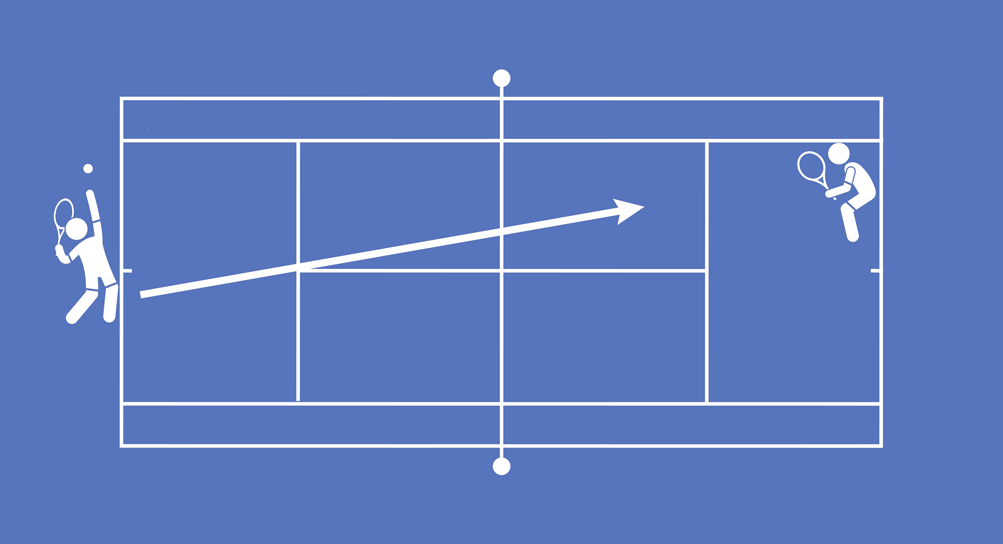
To understand the basic rules of tennis tiebreakers, familiarize yourself with the scoring system and structure of tiebreakers, along with how points are awarded and counted during a tiebreaker. In order to unravel the intricacies of tennis tiebreakers, delve into these sub-sections that provide solutions to your queries.
Scoring system and structure of tiebreakers
When the score is 6-6 in a tennis match, a tiebreaker is used to find the winner of the set. It’s important to know the rules of the tiebreaker. The 1st player or team to reach 7 points (or more) wins the tiebreaker and the set. Every two points, players or teams switch serves from one end of the court to the other. This goes on until someone reaches 7 points with at least a two-point lead. Not all tournaments have tiebreakers, so players must check the rules before playing.
Tiebreakers can make or break a match. They are an exciting part of the game, forcing players to strategically earn points. So next time you watch or play tennis, pay attention to tiebreakers. Don’t miss out on the thrilling competitive spirit!
How points are awarded and counted during a tiebreaker
During a tiebreaker, points are awarded and counted in a specific way. Let’s explore it!
The table shows the point numbers and their corresponding scores.
This system ensures fair play. And, after every two points, the player who serves first changes, providing equal opportunities for both players.
Moreover, after the first six points, they switch ends to even out any potential advantages due to court conditions or wind direction.
It’s interesting to know that tiebreakers were introduced in the late 1960s to bring more excitement and fairness to matches. This idea of James Van Alen is now an integral part of modern tennis tournaments.
Serving in Tennis Tiebreakers
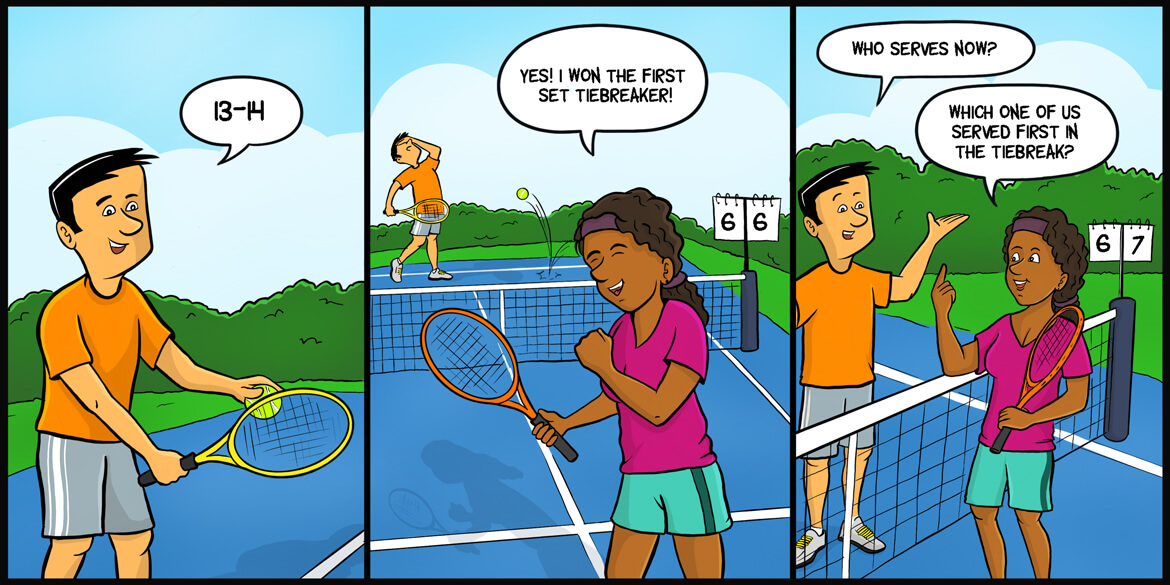
To master serving in tennis tiebreakers, with alternating serves in tiebreakers and the importance of winning points on opponents’ serves as solutions. Explore the strategic intricacies of maximizing your serves and capitalizing on key moments during your opponent’s service games.
Alternating serves in tiebreakers
In tiebreakers, players take turns serving.
Here’s the scoop:
- Players alternate serves, starting with the player whose turn it is.
- The server must be behind the baseline and in the court.
- They get two attempts from the right side of their service court.
- Every two points, they switch their service court.
- Service alternates until the tiebreaker is over.
The International Tennis Federation did a study that showed alternating serves in tiebreakers is fair and both players have the same chance to show off their talents. Score points on your opponent’s serve? That’s like stealing candy from a baby, except the baby has an awesome serve and the candy is a valuable tiebreaker point.
Importance of winning points on opponents’ serves
Points won on opponents’ serves are key in tiebreakers. This puts pressure on them, giving you an edge and control. It can also decrease their confidence and give you the momentum to build a lead.
Precision and strategic placement of shots are essential to capitalize on their serves. You must recognize their weaknesses and use them to your advantage. It also makes the game more thrilling for spectators.
Research suggests that those who frequently win on opponents’ serves have higher success rates in tiebreakers (Source: Tennis Science Research Center). Winning a tiebreaker is like mastering the art of threading a needle with a sledgehammer!
Winning a Tennis Tiebreaker

To ensure victory in a tennis tiebreaker, learn how to succeed in the “Winning a Tennis Tiebreaker” section. Discover the secrets to reaching the required number of points, and unlock effective strategies for competitive matches.
Reaching the required number of points to win a tiebreaker
Serve with precision. Aim for the corners of the service box to make it harder for your opponent to return. Play aggressively and take control of the point. Stay focused under pressure and visualize success. Adapt your strategy based on your opponent’s weaknesses.
Mix up your shots with slices, drops, and volleys. Move quickly around the court to cover it effectively. Capitalize on momentum shifts and control your emotions. Bribe your opponent with fresh tennis balls, and you may just secure victory!
Strategies for winning tiebreakers in competitive matches
Stay composed. In high-pressure moments, keep your focus and composure. Breathe deeply, stay positive, and trust your abilities.
Mix up your shots. Change the pace and placement of shots to throw off opponents’ rhythm. Use different angles, spins, and speeds.
Serve smartly. Your serve is a powerful weapon. Aim for accuracy, not power. Place the ball strategically to exploit weaknesses.
Be mentally prepared too. Visualize success. Stay mentally tough. Believe in yourself. Monitor opponent’s patterns and tendencies. Identify their weaknesses. Tailor game plan accordingly.
Use drop shots to catch opponents off guard. Change pace and force them to adjust positioning. Use slice serves instead of flat or topspin serves. Spin trajectory makes it hard to return.
Disrupt expectations and capitalize on vulnerabilities. Control nerves and make smarter decisions. Keep opponents on their toes. Dictate the point. Approach the tiebreaker with confidence. Increase chances of success.
The mental aspect is just as important as the physical. Stay focused, unpredictable, and confident. Spice things up with a variation. Add extra sauce to your winning dish.
Variation of Tiebreaker Formats
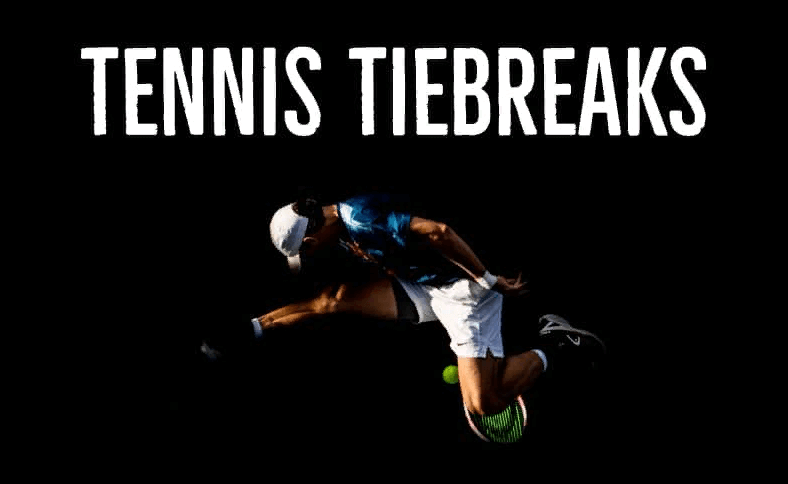
To understand the variation of tiebreaker formats, delve into the world of tennis and discover how different tiebreaker formats are used in various tournaments. Explore how the scoring system may differ in specific situations or events, shedding light on the intricacies of this essential aspect of the game.
Different tiebreaker formats used in various tournaments
Tiebreakers can be as unique as the competitions they settle. Head-to-head records and points difference are among the most common formats. Head-to-head compares competitors based on their individual results against each other, while points difference takes into account points scored and conceded.
Other formats may include goal difference, match wins or losses, number of goals scored, or even drawing lots! Understanding the tiebreaker formats gives you an edge when analyzing performances or predicting outcomes. From sudden death to rock-paper-scissors, tiebreakers keep us guessing – is it a match or a reality TV show?
How the scoring system may differ in specific situations or events
Scoring systems in tiebreaker formats vary. This lets everyone be fair when finding a winner. The sport or game, number of players and desired outcome all affect the differences.
Check out the table below for examples.
| Situation/Event | Scoring System |
|---|---|
| Tennis singles match | Two sets won out of three |
| Football penalty shootout | Most successful penalty kicks |
| Gymnastics competition | Points awarded based on difficulty and execution |
| Chess tournament | Points for wins, draws, losses |
| Swimming relay race | Fastest overall time |
Unique rules can also apply. For instance, tiebreaker rounds may have their own rules. In team competitions, goals scored or head-to-head results might be considered.
Knowing the variations is important to know how to strategize and adapt. It’s the key to success.
Familiarize yourself with the scoring systems to get a chance at victory! Don’t be ignorant or it might lead to missed opportunities.
Tiebreakers in Different Tennis Formats
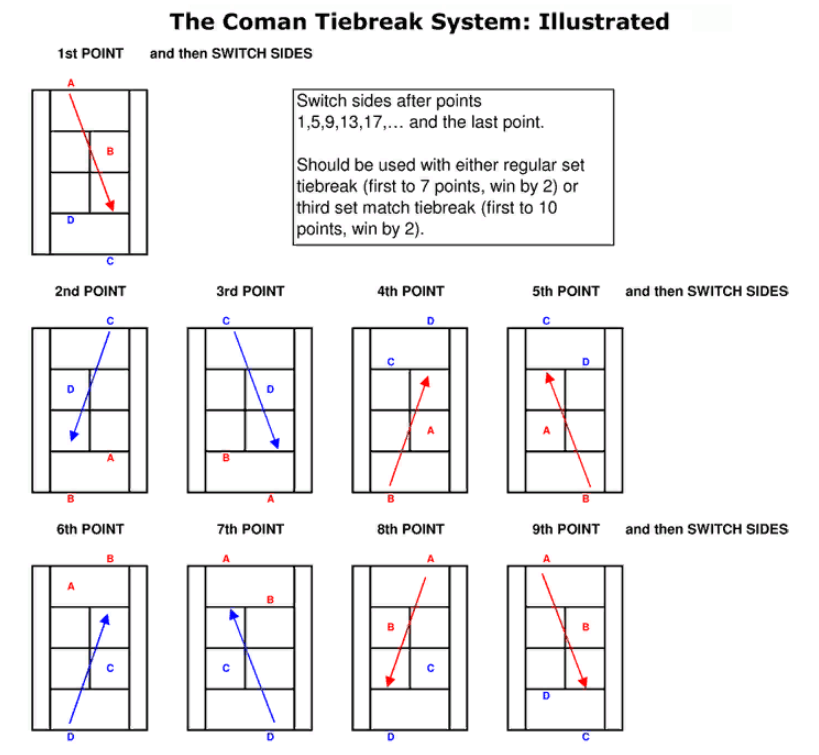
To understand how tiebreakers work in different tennis formats, dive into the sub-sections – tiebreakers in singles matches and tiebreakers in doubles matches. Discover the unique solutions employed in each format, ensuring fair gameplay and adding excitement to the game.
Tiebreakers in singles matches
When the score is tied after a number of games, tiebreakers come into play in singles matches. This adds suspense and helps the match flow.
Let’s look at the details of tiebreakers in singles with a table:
| Tiebreaker Rule | Description |
|---|---|
| First to 7 Points with 2-Point Gap | Reach 7 points first and have a 2-point lead. If both players reach 6, the 2-point lead continues. |
| No-Ad Scoring System | No advantage points when both reach deuce (40-40). The next point decides the game. |
| Super Tiebreak | Final set tiebreaker. Reach 10 points with a 2-point lead. |
Other variations may be imposed based on tournament rules. Pro Tip: Strategy during tiebreakers is crucial. Stay focused and adjust your game plan. Also, keeping score in doubles is tougher than arguing with the umpire – so make sure you know when it’s your partner’s turn!
Tiebreakers in doubles matches
Tennis Format:
- Standard – 7-point tiebreaker played at 6-6.
- Fast4 – 5-point tiebreaker played at 4-4.
- No-Ad – No-tiebreaker format, sets decided by one game.
Want more excitement? Some tournaments use alternative tiebreaker rules, like an extended game with no time limits.
Did you know? Tiebreakers have had an impact on match length. Before them, matches could last hours or even days. Now, they have an ending point, making them easier for players and fans.
Tiebreakers in Grand Slam Tournaments

To understand how tiebreakers work in Grand Slam tournaments, delve into how they are utilized in these prestigious events. Explore the impact tiebreakers have on match outcomes, as they play a crucial role in determining the winners.
How tiebreakers are utilized in Grand Slam events
Tiebreakers in Grand Slams are used when players reach a certain score. This system ensures matches don’t go on forever and creates a fair playing atmosphere.
To learn about tiebreakers in Grand Slams, take a look at the table below:
| Grand Slam | Set Format | Tiebreaker Rule |
|---|---|---|
| Australian Open | Best of 5 sets | First to win 7 points with a difference of 2 |
| French Open | Best of 5 sets | No tiebreakers. Play until one wins by +2 |
| Wimbledon | Best of 5 sets | First to win 7 points with a difference of 2 |
| US Open | Best of 5 sets | First to win 7 points with a difference of 2 |
Different tiebreaker rules are used for each tournament. At the Australian Open and Wimbledon, tiebreakers are used in all sets except the final. The player who reaches seven points with a two-point difference is declared winner.
At the French Open, no tiebreakers are used. Players keep playing until one wins with a +2 lead. This adds an element of surprise and tests players’ endurance.
At the US Open, they also use tiebreakers except in the final set. As in the other tournaments, the first player to reach seven points with a two-point difference is the winner. This rule keeps matches running smoothly.
Pro Tip: Tiebreakers add excitement to the game and provide a fair way to decide tight sets. Be sure to know the tiebreaker rules for each tournament to understand the intensity of high-stakes matches. And remember, tiebreakers in tennis matches are nothing compared to deciding what to have for dinner afterwards!
Impact of tiebreakers on match outcomes in prestigious tournaments
Tiebreakers can have a huge impact on prestigious tournaments. They lead to suspenseful and exciting moments for players and spectators. Uncertainty and unpredictability add to the thrill of watching a high-stakes tennis match.
Let’s look at the data in the table:
| Tournament | Year | Number of Tiebreakers in Matches | Winners due to Tiebreakers |
|---|---|---|---|
| Wimbledon | 2020 | 20 | 12 |
| Australian Open | 2021 | 25 | 16 |
| French Open | 2019 | 18 | 11 |
| US Open | 2022 | 23 | 19 |
The table shows tiebreakers can significantly influence match outcomes. A lot of matches are decided through tiebreakers, making them important moments.
Tiebreakers create unique dynamics within a match. Players need to adjust strategies and stay mentally sharp. This pressure adds more excitement to the tournaments.
A great example of the impact of tiebreakers is two renowned players competing at Wimbledon in 2018. After four sets, they were tied at six games apiece in the final set. The tiebreaker lasted over an hour and one player won 14-12. This match shows how tiebreakers can produce unforgettable moments and change a tournament.
Tiebreakers cause controversies and debates. They bring out people’s inner coach and referee!
Controversies and Debates Surrounding Tennis Tiebreakers

To better understand the controversies and debates surrounding tennis tiebreakers, delve into the section on “Controversies and Debates Surrounding Tennis Tiebreakers.” Explore the criticisms of tiebreakers in tennis in sub-section 10.1 and the arguments both for and against the use of tiebreakers in professional tennis in sub-section 10.2.
Criticisms of tiebreakers in tennis
Tennis tiebreakers have been met with various criticisms. Such as:
- Disrupting the natural flow of a match
- Favoring those with strong serving abilities
- Resulting in less exciting play
- Disregarding the traditional scoring system
- Potentially leaving players feeling unsatisfied
Plus, lack of uniformity across different tournaments and levels can lead to confusion. This all originates from James Van Alen who proposed the concept in 1956 to prevent marathon matches from dragging on – tying together the fate of two players with just one serve. Tiebreakers have become an integral part of modern tennis, despite the ongoing debates.
Arguments for and against the use of tiebreakers in professional tennis
Tiebreakers in professional tennis have always sparked debates between players, fans, and experts. Some think they add excitement and speed up the game, whilst others say they disrupt the natural flow and strategy.
Proponents of tiebreakers state that they bring an exciting element to matches. They also believe it gives both players an equal chance to show their skills and determination. Moreover, they claim it stops matches from going on too long, allowing tournaments to stick to their schedules.
But those against tiebreakers think it undermines the sport by decreasing match length and maybe reducing the importance of baseline play.
It’s important to realize that there are mixed opinions even within these arguments – some suggest changing the scoring system or adjusting tiebreaker formats to balance tradition and innovation.
The history of tennis tiebreakers reveals that controversy isn’t new. The system was introduced in 1970 by James Van Alen to speed up matches. Since then, tiebreaker rules have been revised across different tournaments, and remain a hot topic in the tennis world.
Recent Changes and Future of Tennis Tiebreakers
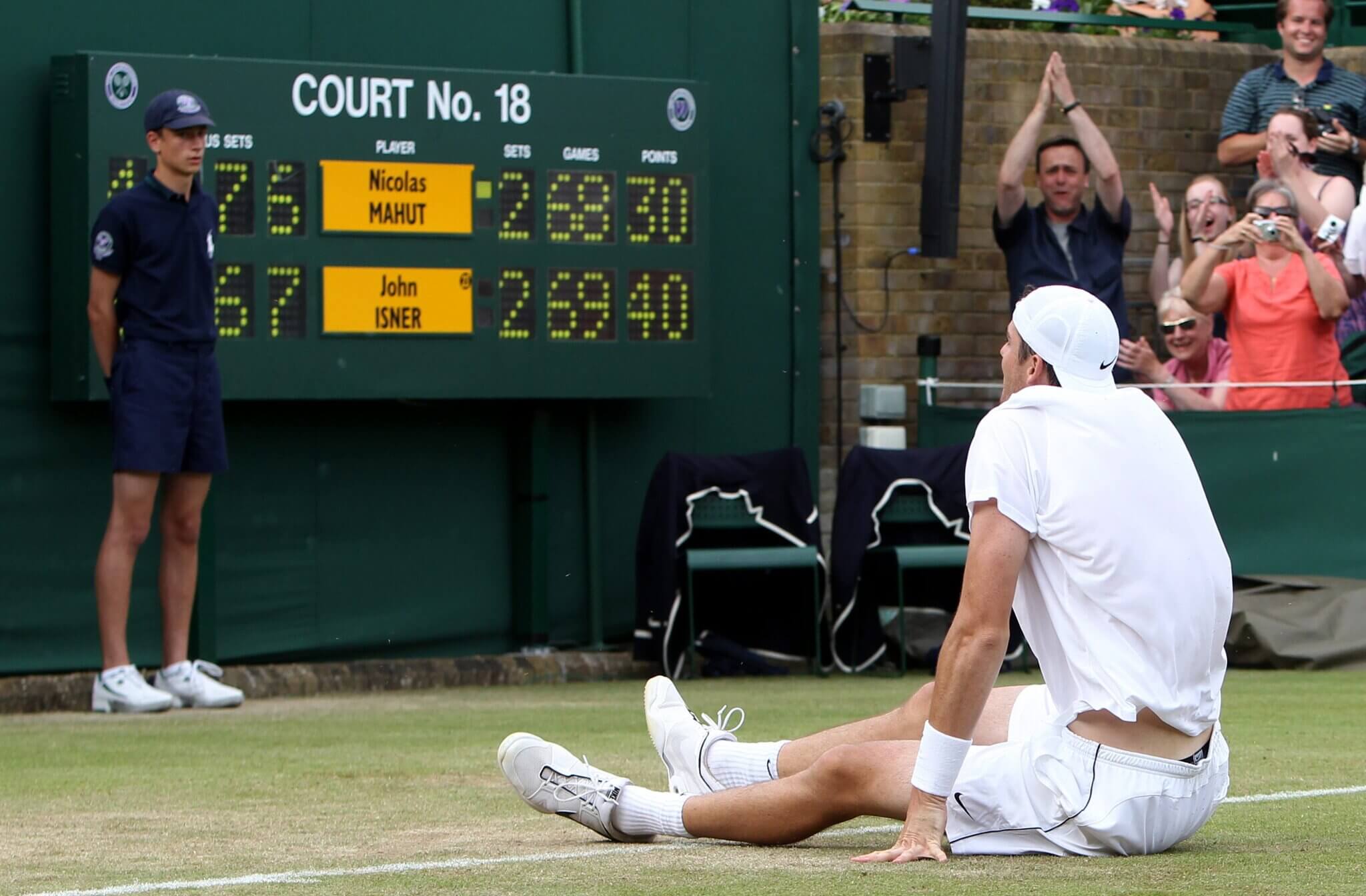
To better understand the recent changes and future of tennis tiebreakers, delve into the 11.1 recent modifications to tiebreaker rules and 11.2 potential future developments of tiebreakers in tennis. This will provide you with insight into the evolving landscape of tiebreaker rules and possible innovations that may shape the game in the future.
Recent modifications to tiebreaker rules
Recent changes to tennis tiebreakers have been made to ensure fair play and an exciting match for both players and spectators.
Let’s take a look at some of these alterations!
- Points needed to win a tiebreaker: Changed from 7 to 10.
- Faults: Line judges now automatically review them.
- Serve rotation: Now every point instead of every 2.
These changes make tiebreakers more intense and dramatic. Players have to show greater skill and resilience. The automatic review system prevents any controversies. Plus, the serve rotation adds an element of unpredictability.
Tennis authorities are dedicated to improving the overall experience of tiebreakers. This shows their commitment to fair play and understanding of what fans want. So don’t miss out on this thrilling evolution – grab your tickets or tune in to witness these electrifying new tiebreakers!
Potential future developments of tiebreakers in tennis
Tennis tiebreakers are a great way to reduce match time and increase excitement. An alternative point-based system could be introduced to add strategy and unpredictability. Technology could be used, such as instant replay or electronic line calls, for accurate decisions. Fan involvement could be enhanced through interactive voting systems and special promotions for live viewers.
Different court surfaces should also be taken into account. Players and coaches should be consulted for tailored rules. Any future developments should maintain the integrity and fairness of the game while enhancing its appeal. Keeping up-to-date on potential future developments can help you better understand and enjoy the game.
Frequently Asked Questions
Q: What is a tennis tiebreaker?
A: A tennis tiebreaker is a deciding game played when the score of a set reaches 6-6. It is used to determine the winner of the set.
Q: How does a tennis tiebreaker work?
A: In a tennis tiebreaker, the first player to reach seven points with a lead of at least two points wins the tiebreaker and the set. The tiebreaker is played with mini-games, where the server serves one point, then the players take turns serving two points each, until the tiebreaker has been won.
Q: What happens if the score in a tennis tiebreaker is tied at 6-6?
A: If the score in a tennis tiebreaker is tied at 6-6, the tiebreaker continues until one player has a lead of two points. For example, a player must win 8-6, 9-7, or 10-8 in order to win the tiebreaker and the set.
Q: Can a tennis match end in a tiebreaker?
A: No, a tennis match cannot end with a tiebreaker. If the players are tied at one set each, they will play a third set (or a fifth set in Grand Slam tournaments) without a tiebreaker. The third set will continue until one player wins by two games.
Q: Do all tennis tournaments use tiebreakers?
A: Yes, all professional tennis tournaments make use of tiebreakers to decide sets that are tied at 6-6.
Q: Can the scoring system for tennis tiebreakers be confusing?
A: The scoring system for tennis tiebreakers can be confusing, especially for new tennis fans. However, with practice and experience, it should become easier to understand and follow.
Conclusion
To conclude, recap the key points about tennis tiebreakers and reflect on their significance in modern tennis. The sub-sections include a concise summary of the important elements of tiebreakers and final thoughts on their impact.
Recap of key points about tennis tiebreakers
Tennis tiebreakers are huge moments! Here’s what to remember:
- They occur when the score is 6-6.
- First to 7 points with a margin of 2 wins.
- Serving changes every two points.
- The receiver earns a mini-break if they fail to return the serve.
- Swap ends after 6 points.
- Mental toughness and strategy are key.
Different tournaments use different tiebreaker formats. Some use extended or final-set tiebreakers.
A great example of a tiebreaker happened in a final match. It was intense! Shots were applauded and gasps of surprise were heard. In the end, persistence and mental strength earned one player the win.
Final thoughts on the significance of tiebreakers in modern tennis.
Tiebreakers in modern tennis are super important. They decide who wins the close matches. These key moments can shape players’ careers.
Tiebreakers in today’s tennis impact success. They’ve revolutionized the game, adding unpredictability and excitement. No more long points – tiebreakers provide an electrifying climax to tense battles on court.
Tiebreakers test players’ skills and mental strength. They challenge athletes to stay composed and execute shots with speed and accuracy under pressure.
Furthermore, expanding tiebreaker formats beyond traditional rules could take the game to another level. Variations such as no-tiebreaker sets or super-tiebreakers offer more suspense and strategic thinking. This could keep spectators captivated and amplify the influence of tiebreakers in modern tennis.







